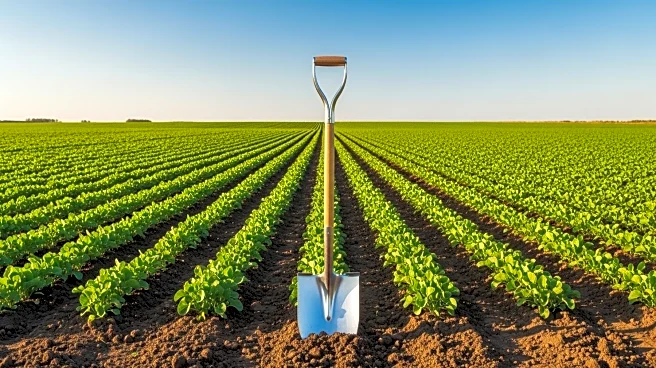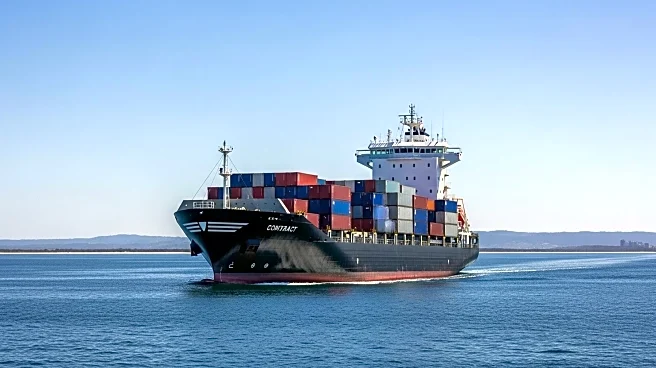What is the story about?
What's Happening?
Rio Tinto has joined forces with the Clean Energy Finance Corporation (CEFC) and global investment group La Caisse to launch a A$250-million agricultural and carbon platform in Australia. The initiative, known as the Meldora platform, is managed by Gunn Agri Partners and aims to integrate sustainable agricultural production with large-scale environmental plantings under the Australian Carbon Credit Units (ACCUs) scheme. La Caisse has committed A$200 million, while the CEFC has contributed A$50 million. The platform's first acquisition is a 15,000-hectare broadacre and irrigation farm in Central Queensland. The project is designed to produce high-quality carbon credits by restoring native vegetation, which will be maintained for 25 to 100 years, providing long-term carbon sequestration and biodiversity gains.
Why It's Important?
This initiative represents a significant step towards sustainable land use and carbon sequestration in Australia. By integrating agricultural production with environmental restoration, the Meldora platform aims to deliver multiple benefits, including agricultural commodities, carbon revenues, and enhanced ecosystems. Rio Tinto's involvement as a foundation offtaker of ACCUs underscores its commitment to investing in high-integrity carbon credits. The project aligns with broader net-zero ambitions and reflects a growing trend of corporate responsibility towards environmental sustainability. The investment could set a precedent for similar initiatives globally, promoting sustainable practices in agriculture and carbon management.
What's Next?
The Meldora platform is expected to scale its operations, potentially acquiring more land and expanding its environmental restoration efforts. As the project progresses, it may attract additional investors and partners interested in sustainable agriculture and carbon credits. The long-term maintenance of restored vegetation will be crucial for achieving the desired carbon sequestration and biodiversity outcomes. Stakeholders, including Rio Tinto, CEFC, and La Caisse, will likely monitor the project's impact and explore further opportunities for collaboration in sustainable land use and carbon management.
Beyond the Headlines
The Meldora initiative highlights the intersection of agriculture and environmental sustainability, offering a model for integrating economic and ecological goals. It raises questions about the role of large corporations in driving environmental change and the potential for similar projects to influence policy and industry standards. The long-term commitment to maintaining restored vegetation also underscores the importance of considering ecological timelines in carbon sequestration efforts.
AI Generated Content
Do you find this article useful?















